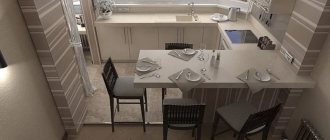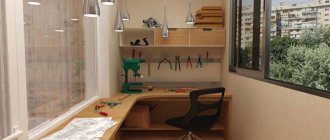The freezer is used for permanent storage of meat and vegetable preparations. It is purchased when there is no space left in the refrigerator to freeze food. However, the area of the apartment does not always allow placing the device in the kitchen. In this case, users have a question whether the freezer can be placed on an unheated balcony.
The principle of operation of the freezer
Each device has its own requirements for operating conditions. They also include location characteristics. To find out whether it is possible to place a refrigerator on a balcony, you need to understand how the cooling process occurs.
Components of a conventional refrigerator:
- A compressor is a piston mechanism responsible for moving refrigerant.
- Evaporator – located in the walls of the refrigeration chamber, it takes heat from it.
- Condenser – transfers heat to the outside, located at the rear of the unit.
- The refrigerant (most often freon gas) is distilled by a compressor through pipelines and delivers heat to the condenser from the evaporator.
When liquid freon enters the evaporator, it becomes gaseous. Its temperature readings become lower than those inside the refrigerator. Therefore, the freon heats up and the chamber cools. The refrigerant is then distilled into a cooler where it cools and returns to liquid form. After freon enters the evaporator, the entire cycle begins again. Freon moves until the desired temperature inside the chamber is reached.
Refrigerants can move stably through pipes at a certain room temperature. Manufacturers create models that operate stably under standard environmental conditions. If in the middle part of the country the temperature in a residential building ranges from +17 to +30℃, then refrigeration equipment for these regions will work properly at such indicators. For southern tropical countries, both the temperature and humidity at which the refrigerator can be used will be different.
There is such a thing as climate classes. Information about them can be found in the product data sheet. The class value determines what ambient temperature range the device is designed for. This indicator is key when deciding to install a refrigerator on a balcony or loggia.
Main types of classes:
- N – from +16 to +32℃;
- SN – from +10 to +32℃;
- T – from +18 to +43℃;
- ST – from +18 to +38℃.
They are respectively designed for normal, subnormal, tropical and subtropical regions.
Is it possible to place a refrigerator on the balcony in winter?
Balconies and loggias can differ greatly from each other in the degree of protection from external conditions. There are several main types; let’s take a closer look at the possibility of installing refrigeration equipment on them.
Balcony without glazing and insulation
Placing a freezer on an open balcony is strictly prohibited!
Placing equipment on such a balcony is the same as on the street. It has no protection from severe frost or heat, from precipitation, dust, as well as insects and rodents. All this will lead to the following problems with technology:
- Formation of rust on metal parts from contact with precipitation.
- Increasing load on the compressor will lead to early wear of the equipment.
- Violation of the appearance of the equipment body.
- Damage to the seal from temperature changes, heat and frost will result in the door not fitting tightly to the body.
- Risk of fire from short circuit due to moisture getting into the electronics of the refrigerator.
Corrosion process on the surface of the evaporator.
Glazed balcony without additional insulation
A closed loggia is a more suitable place to keep a refrigerator. Glazing prevents direct precipitation from coming into contact with equipment, but condensation often forms on uninsulated balconies due to temperature changes. Moisture can get on the body, wires, and electrical parts of the refrigerator. “Cold” glazing does not provide good sealing, which means that some dust and precipitation will get inside, especially in the wind.
Even if you provide waterproofing, it will be impossible to maintain a suitable temperature in extreme cold and heat. If the air is warmer or colder than the data specified in the data sheet, the refrigerator simply will not turn on.
Note! If the freezer turns off almost immediately after turning it on, the operating temperature conditions were probably not maintained.
If the summer is not very hot, then it is possible to use the refrigerator in spring - autumn, and store food in the off mode in winter. Refrigerators do not have a warming function, and if the room is very cold, the device will not be able to function.
Glazed and insulated balcony
Warm glazing prevents the penetration of cold air from outside and does not let heat out. But in extreme cold, this may not be enough to maintain the operating temperature of the refrigerator (+16-+30℃). Then additional heating of the room is required. To do this, use heaters or install a heated floor system.
In addition, sun protection and ventilation will be required. Metal or plastic blinds and thick curtains reliably protect from sunlight.
“Warm” window profiles, insulation and the weight of the refrigerator will put a noticeable load on the balcony slab. It is important to take this into account and calculate in advance the maximum available weight of structures and equipment.
Please note: We organize a greenhouse for the balcony with our own hands: a greenhouse without leaving home
In the case where the loggia is attached to the room, there are no restrictions on the placement of refrigeration equipment there. In such a room the same microclimate is maintained as in the entire apartment.
Where to put the freezer? Lifehack from Liebherr
Gardeners want to enjoy their harvest all winter. Large families need to store mountains of food regularly purchased from the supermarket. The best way to store them for a long time is freezing. But not everything fits in the refrigerator freezer, and there is often nowhere to put a separate freezer cabinet. Liebherr has found a solution - freezers that operate even at sub-zero outside temperatures.
Of course, no one is calling for installing a freezer somewhere on the street, near the house - they will also steal it, along with the food. We are talking about unheated rooms: a basement, a closed veranda or terrace, a glazed balcony - the freezer is no longer persona non grata here.
The new Liebherr freezers freeze food and ensure long-term storage at external temperatures down to -15°C, whereas previously the minimum temperature for proper operation had to be at least +10°C. Let's take a closer look at the new products.
Ilya Chumakov, representative of Liebherr Russia:
Is a freezer necessary if the temperature in an unheated room is below zero? Yes, because it changes, and this is very bad for products - they cannot be stored this way. For example, on a winter night on a closed veranda there may be a “minus”, but during the day the sun will come out and there will be a “plus”. Can you imagine what will happen to frozen meat, fish, mushrooms or berries with constant temperature changes? To be completely confident in the quality of food storage, we have developed our new freezers: the temperature in them is always stable, no matter how capricious the weather is.
Review of freezer Liebherr Gsl 1223 20C
For uncompromising visuals, we made a video in which we talk in detail about one of the new Liebherr freezers - Gsl 1223 20C*. It’s good that the new products can work at subzero outside temperatures—many will appreciate it. But what else can be said about them? How convenient are they, what other modern technologies are implemented in them? We didn't miss anything.
*In addition to the silver Gsl 1223 20C, there is exactly the same white one - Liebherr G 1223 20J. Models G 1213 20J (white) and Gbe 1213 20A (beige) differ from them only in the design of the handle.
State-of-the-art technology in new Liebherr freezers
SmartFrost . The evaporator in all Liebherr freezers is located inside a special plastic housing-circuit and is foamed with insulation. Thanks to this, a minimum of frost forms on the inner walls of the freezer and on the food - this has a positive effect on the quality of storage and allows you to defrost the chamber much less often. Freezing is uniform, with less electricity consumption. The interior walls of the freezers are smooth, making them easy to clean.
Freezer Liebherr GX 823 20J. Two pull-out boxes. Volume - 68 l. Dimensions: 63.1×55.3×62.4 cm
SuperFrost. Express freezing: for situations when the freezer is replenished with new products (harvest, trip to the supermarket). After its activation, the temperature quickly drops to -32°C. A “cold reserve” is created, which is necessary for freezing products with maximum preservation of vitamins - using the shock method. In this mode, the freezer operates for up to 65 hours. If you do not turn it off earlier, it will return to normal operation with economical energy consumption.
FrostSafe . Transparent pull-out plastic containers - with a special coating on the walls. This, as well as the minimal gaps between containers (the flow of warm air is limited), almost completely eliminates the freezing of products to the walls or to each other, the formation of ice crystals and frost on them.
The contents of the containers are always visible - this is convenient and has a good effect on the quality of storage: you won’t have to open other containers again in search of what you need, and there will be no contact of frozen products with warmer air.
VarioSpace . The point is to transform the space of the working chamber of the freezer. All containers and shelves can be easily removed and replaced. If necessary, you can free up space for freezing and storing large products (parts of a meat carcass and others).
Freezer Liebherr GPesf 1476 20M. Four pull-out boxes. Volume - 103 l. Dimensions: 85.1×60.2×61 cm
Electronic control . All new Liebherr freezers have simple and intuitive electronic controls. It allows you to set the temperature in the chamber with an accuracy of a degree, and also makes it possible to implement additional functions (for example, SuperFrost).
Child protection . Food is stored in the freezer, so it is especially important that it is not accidentally turned off or the operating mode is changed. All Liebherr freezers have child protection (they sometimes like to press buttons) - the control panel is locked. A special symbol on the display will indicate that this function is active.
High energy efficiency . The freezer, like the refrigerator, works constantly. Therefore, economical consumption of electricity is especially important. All new Liebherr products have energy efficiency classes A+ and A++, which corresponds to the latest energy consumption standards.
Freezer Liebherr GP 2733 001 20D. Seven drawers. Volume - 224 l. Dimensions: 164×60×63.2 cm
Important Features
In total, Liebherr presented 11 new upright freezers that operate even at outside temperatures down to -15°C. Here are their most important characteristics**:
— height: from 63.1 to 164.4 cm — useful volume from 68 to 224 l — number of drawers: from 2 to 7 — freezing capacity: from 8 to 28 kg of food per knock — energy efficiency class: A+ or A+ +
**Depending on model.
All new Liebherr freezers feature tempered glass shelves. Noise level - up to 40 dB (muffled conversation, quiet speech). Prices for new vertical freezers start from 13,500 rubles.
The update affected not only vertical freezers, but also horizontal chest freezers: 13 new models with a capacity from 172 to 537 liters are now also capable of operating at outside temperatures down to -15°C - choose a convenient format for storing food. The full list of “frost-resistant” new products is on the official Liebherr blog.
Verdict Chudo.tech
Liebherr has long been known for its innovations in refrigeration and quality food storage. For example, in 1987, the Germans were the first to implement auto-defrosting in the freezer (No Frost). A few years later, it was in the Liebherr refrigerator that the freshness zone first appeared - a compartment for storing perishable fresh food at a temperature of -1° to 3°C. Over time, these technologies were introduced into refrigerators of other brands.
New freezers operating at sub-zero outside temperatures are further proof of the technological advancement of the company from Germany. Now, if you don’t have enough space in your apartment or country house, and you need to store a large amount of food for a long time, you can install a freezer in an unheated room: in the basement, on a closed veranda, terrace or on a glazed balcony.
Read and see also: Review of the Liebherr smart refrigerator.
Is it possible to put a freezer on the balcony?
The conditions for placing a freezer on the balcony in winter are generally the same as for refrigerators. But there are nuances. The average temperature inside the chamber is -18℃. For the equipment to work, the air outside must be 2-3 degrees warmer. At -16℃ the device will work, but at maximum power. This will lead to rapid wear of the compressor and breakdown of the cooling system.
Important! Violation of the rules for operating devices specified in the instructions is grounds for refusal of free repair.
Whether to install a freezer on an insufficiently protected and insulated balcony is up to each owner to decide for himself. But it is important to understand what problems this can lead to. In addition to equipment failure, there is a risk of causing inconvenience to neighbors. Vibration from a working refrigerator can be transmitted along the walls and be felt by residents as a constant hum.
Among all types of balconies, the only suitable option for placement is a glazed, insulated loggia. But it is equally important to choose the right equipment model.
At what temperature does the freezer operate?
The freezer must operate, maintaining the temperature inside the chambers within the range of -16...-25 °C. The automatic system starts the compressor when this indicator increases by 2...3 °C. In this way, the freezer can be kept running at -13°C. In this case, the device will operate with overloads that negatively affect the condition of the compressor. Temperature values within the climatic parameters of the device are acceptable for operation, i.e. not less than +10 °C.
What kind of freezer can be installed on the balcony?
Freezers differ in design solutions:
- Chests are a horizontally located chamber with a door on top. Inside the chest is divided into compartments.
- Cabinets are no different in appearance from refrigerators. They have a vertical arrangement, the door opens from the front.
The choice of model depends on personal preferences, the size of the loggia and the types of products that you plan to store frozen.
Whether a freezer will work on a balcony in winter depends on the region for which it was manufactured (climate class). For regions with a mild climate, where the temperature in winter does not drop below +12℃, class N models are suitable. Provided that the freezer is placed on a balcony with glazing and insulation.
Operational requirements of the equipment
At what temperature can the refrigerator be operated, and what needs to be provided to install the refrigeration appliance model outside the heated room.
Thanks to its small size, you can place the device on the balcony.
- The temperature should not fall below 20 degrees below zero.
- The supporting slab must be reinforced.
- The vibration level should be leveled. This can be achieved by leveling the surface using a building level.
- The freezer compartment, and especially its electrical components, must not be exposed to precipitation.
- The equipment should not be exposed to direct sunlight.
- In the summer, it is also necessary to take care of the temperature regime; the thermometer should not rise above 32-34 Celsius.
Freezers are vertical devices. They look like real classic refrigerators. Loading of products is carried out frontally.
By following these important operating rules, you can use your freezer absolutely safely. And this will allow you to gain space for storing products.
It must be remembered that, despite the glazing, the air temperature on the balcony should not be lower than +5°C.
Rules for installing and connecting the device
In addition to the temperature, humidity and strength of the balcony slab, the uninterrupted operation of the device is affected by proper installation and connection. These rules will help extend the life of the equipment and make the operating process safe:
- The base must be level and stable.
- The distance from the rear and side walls to the surfaces of the balcony must be at least 4-5 cm. This is necessary for sufficient air ventilation and to prevent overcooling of the device.
- It is not recommended to connect the device to the network through a carrying case. The outlet must meet all standards and be grounded.
- The device should not be located near batteries or heaters.
Wardrobe with built-in freezer for a heated balcony:
You can install the refrigerator on a glazed and well-insulated balcony. It would be good if it would be possible to additionally heat it in cold weather, as well as cool it in hot weather.
The technologies used in the latest models allow the device to operate even at ambient temperatures up to +5℃. At the same time, the load on all systems will be increased, which can lead to early wear of the equipment. Repair under warranty in this case is impossible, since the operating conditions were violated. If you have an old device, for which the warranty has long expired and you don’t mind parting with it if it breaks, then you can try placing it on the balcony. In any case, it is important to ensure fire safety and ensure the stability of the balcony base.
Features of operating a freezer at sub-zero temperatures
To ensure that your freezer can be operated at sub-zero temperatures, you need to think about the oil that is poured into the compressor. After all, when the frost is -30, its fluidity decreases sharply, which means the motor will not be able to pump freon. The best option in this situation is polyvinyl ester oil.
In the cold, the oil needed to lubricate the parts thickens, there is not enough pressure to move the freon, and the seal bursts.
You should also take the choice of model seriously. Not all manufacturers provide such technical conditions for operation. Therefore, it is worth paying attention to the recommendations of the manufacturer.
If the refrigerator is new, the warranty will not work in this case, because the conditions for storing and using the unit were not met.
What is dangerous for a refrigerator when installed on a balcony?
Before installing a refrigerator on the balcony, you need to take into account all the risks and take into account many negative factors that will negatively affect the performance and condition of household appliances:
- The recommended temperature range for modern refrigerators used in our country is 15-35 degrees, which is very difficult to maintain on an unheated balcony;
- Don’t forget about electrical safety, which is why many experts categorically do not recommend installing tees and various extension cords on balconies;
- If the equipment is installed on an open balcony or near an open window, the body of the refrigerator may be exposed to snow, rain and other precipitation, which will quickly lead to damage to the working elements of the refrigerator and their failure;
- A high level of humidity, which will certainly be combined with a low temperature, will reduce the operating life of the refrigerator to a minimum;
- Having installed the refrigerator on the balcony, you will also need to consider its use in the summer, when the body of the equipment will become very hot due to sunlight, which can cause damage to the insulation of cables and rubber parts;
- In addition, a high level of heating will increase the pressure in the cooling system, so the refrigerator will work constantly, without interruption, which also negatively affects its performance.
These problems are relevant if the refrigerator or freezer on the balcony is located in an unheated and unglazed room.
Storing vegetables, fruits and other products on an unglazed balcony in winter is also possible outside the refrigerator.
Please note: How to properly store potatoes on your home balcony: containers and conditions
Video MK: cabinet with built-in freezer for a heated balcony
Installing a chest freezer or cabinet is possible only on a carefully landscaped balcony. So that even under these conditions the process of operating the device is not fraught with difficulties, it is necessary to take a responsible approach to the issue of its selection and connection. For the latter, you can invite an electrician. He will carry out all the technical part and give valuable recommendations.
The freezer is used for permanent storage of meat and vegetable preparations. It is purchased when there is no space left in the refrigerator to freeze food. However, the area of the apartment does not always allow placing the device in the kitchen. In this case, users have a question whether the freezer can be placed on an unheated balcony.
Is it possible to place a refrigerator on an unheated balcony?
It was already noted above that the refrigerator and freezer will not work properly in low temperature conditions. It is quite possible to turn them off in an emergency under extreme operating conditions. Of course, it is possible that the equipment will be used on the balcony in the warm season, and driven back into the kitchen in winter, but this approach is irrational and extremely inconvenient.
General diagram of the refrigerator operation.
If heat exchangers - 1 and 3 freeze, and the oil in compressor - 4 thickens from the cold, then expander - 2 will stop working and the refrigerator will fail.
If the balcony or loggia has high-quality glazing, then these rooms can be additionally heated. For this, a variety of devices can be used: heated floors, oil, infrared, electric heaters - everything is up to the owners’ choice. But you need to understand that constantly heating such a cold room to the required temperatures may well lead to serious electricity costs, because the heaters will work constantly in such conditions.
It is not recommended to place a refrigerator or freezer on the balcony if the room does not have high-quality insulation and glazing.
In difficult operating conditions, the equipment will work irregularly, constantly turn off, and its service life will be reduced.
Installing a refrigerator on a glazed balcony
It is impossible to immediately say whether it is possible to place a refrigerator on the balcony for storing vegetables and fruits if it is completely glazed. The fact is that balconies and loggias, regardless of the level of glazing and insulation, are not residential premises, so it is quite difficult to ensure the required level of temperature and humidity in them, which will be optimal for the operation of household appliances.
It is quite possible to consider the option of replacing the refrigerant in the refrigerator with a lower temperature one if it is expected to constantly operate on a glazed but unheated balcony.
Refrigerator in a niche on the balcony.
Any refrigerator repairman can replace the refrigerant. In addition, in addition to the refrigerant, you will also have to change the oil for the compressor, which will have normal viscosity even at low temperatures. It is important that the technician called is experienced and has certain knowledge in this area, because the selected refrigerant and oil must fully comply with the characteristics of the equipment and be able to maintain the normal functioning of the refrigerator. Some modern models, by the way, use a special refrigerant, which is used together with oil based on semi-vinyl esters, which can work quite well at low temperatures in winter.
You can also consider an exotic option - purchasing a display refrigerator, usually they sell ice cream.
They can be used in conditions of any temperature, both summer and winter. They can be placed on a balcony or loggia, regardless of insulation and glazing. At the same time, manufacturers do not recommend the operation of such equipment when the temperature drops to -5, -7 degrees. And in winter it is often colder on the balcony. It is important to note that display refrigerators are quite large and cost much more than household models, so placing them on your balcony will be problematic.
Rules for correct installation
To make using the freezer safe and convenient, you need to inspect the base of the balcony for damage. The stove must withstand the weight of the appliance, the products it contains and other items located on the loggia. If there are significant defects, repair work will be required. When installing and connecting the freezer, the following rules must be observed:
- The device must not be placed close to a wall. To prevent the compressor and other parts of the system from overheating, place the device at a distance of at least 5 cm from other objects
- The freezer body needs to be leveled. This will help reduce the risk of vibrations that negatively affect the base of the balcony.
- Do not connect the device to the network through extension cords and surge protectors. The loggia is wired and a grounded outlet protected from high humidity is installed.
- Do not use the top of the appliance as a shelf for storing any items. This leads to damage to the freezer body.
If necessary, the device can be installed in a pre-prepared cabinet.
The purchase of a household freezer is due to the need to store a large amount of food. The efficiency of the device depends on compliance with the instructions regarding its inclusion, operation, and choice of location. In our article you will find answers to these questions, and also find out at what temperature the device operates, whether it is possible to keep it on the balcony and use it as a refrigerator.
Installation on a balcony connected to the kitchen
The most suitable option for installing a refrigerator for vegetables and other products outside the kitchen. If the apartment has been remodeled and the balcony has been added to the kitchen, then it becomes one with this room, so there is nothing wrong with installing equipment near the window. At the same time, special attention should be paid to electrical safety, because even on attached loggias and balconies it is necessary to install sockets and switches with a high degree of protection. You can use a well-insulated and protected extension cord.
Refrigerator in attached room.
At the same time, it is important to place the refrigerator for vegetables and other products in a place on the balcony where it will not be exposed to direct sunlight. It is very good if blinds are installed on the windows or dark curtains are hung. Keeping such equipment under the sun is very dangerous, because it can fail due to overheating (including in winter). Also, do not forget about systematic ventilation of the room, for which special ventilation valves that are installed on modern plastic windows are excellent.
High-quality ventilation of the balcony and kitchen is especially important if the window faces the sunny side.
In this case, both in summer and winter, the air in the room will be seriously heated (taking into account the operation of the radiators), so it can be quite hot on the balcony in direct sunlight, which also negatively affects the normal functioning of the equipment.
Can a freezer be used as a refrigerator?
The minimum temperature of the device ranges from -8 to -10 0C. The food placed in it will be stored longer than in the refrigerator compartment, but at the same time they will be frozen.
If you want to convert your freezer into a refrigerator, then on forums on the Internet they suggest following these steps:
- reconfigure the thermostat to a higher temperature;
- install a relay for the refrigerator.
At the same time, many argue that it will not be possible to make a refrigerator from a static freezer, but it is possible to convert units with the No Frost function, but unpackaged products will be severely weathered.
Summary
From all of the above, we can conclude that it is not recommended to install the refrigerator on unglazed and unheated balconies. If the loggia or balcony has glazing, then for the normal functioning of the equipment you need to create all the conditions (installation of heaters, ventilation, protection from the sun, etc.), otherwise the refrigerator will quickly fail.
Please note: How to get rid of condensation on the balcony?
In addition, when installing a refrigerator on a balcony (on a balcony, not in a loggia), you need to take into account the strength of the load-bearing concrete slab (especially in old houses). It is quite possible that it is not designed for heavy loads. And glazing, finishing materials and supplied equipment will create a very significant load on the floor.
A fun way to use an old refrigerator. If you install the pipe on the side, you can also use a working refrigerator on a glassed-in balcony and turn it on only in the summer. Video below.
As an alternative to a regular refrigerator, you can consider purchasing soft thermal containers, which are great for storing vegetables, fruits and other products in winter. Such containers for storing vegetables are used in many countries around the world.
https://www.youtube.com/embed
The nuances of the functioning of the freezer at sub-zero air temperatures
There are two important nuances that should be considered before moving on to the implementation of your plan.
- Load-bearing capacity of the balcony slab. If you have PVC metal packages installed, this gives additional load due to their significant weight. Therefore, it is worth carrying out repair work to strengthen the foundation. If you install windows with an aluminum profile, this will significantly lighten the weight of the structure, which means it will create additional opportunities for installing a freezer.
- You will have to change the wiring diagram and connect a special wire with sufficient resistance to the balcony. You will also have to provide a separate grounded outlet. To do this, you can use the services of a professional electrician. If you have sufficient experience, then you should try to install an outlet on your loggia or balcony yourself.
You can help the refrigerator heat the compressor for safe startup, then it will heat itself. For this purpose, fan heaters and heat guns are used.
Secrets of technology
The basis for the operation of any refrigerator is the principle of phase transition - the phenomenon of changing the aggregate states of substances (from gas to liquid and vice versa). The described physical process is accompanied by another phenomenon - the absorption or formation of a significant amount of heat. The operation of the refrigerator is based on a similar system; refrigerant (freon) is used as a liquid instead of water. In order to understand the effect of freon on cooling the contents of refrigerators, you should know its main characteristics.
- The boiling point of the refrigerant charged into the system is below zero degrees Celsius.
- The process of freon boiling is accompanied by the absorption of warm air from the refrigerator, creating an optimal temperature.
- Thanks to the presence of a compressor, at the next stage freon turns back into liquid.
- The heat generated in the process escapes through the back wall of the refrigerator (heat exchanger).
This is how a refrigerator works
Since the temperature of the living space is above zero degrees, ideal operating conditions for the refrigerant are created. Accordingly, the uninterrupted operation of refrigeration units is ensured by a positive temperature in the room.
It should be noted that manufacturers of modern household appliances have developed special systems in refrigerators that are capable of efficiently performing their functions in different climatic latitudes and temperature conditions.
Basic requirements for the premises
In order to finally understand where it is permissible to store and efficiently use the functions of refrigerators, it is worth finding out the main requirements for the premises. There are few rules and they are all important.
- The best option is frequently ventilated rooms.
- The refrigerator will be uncomfortable in direct sunlight (danger of freon overheating, a direct path to system failure).
- Humidity is below 80 percent.
- It is important to protect household appliances from precipitation.
Conclusion: refrigerators can be stored on loggias with above-zero temperatures, protected from rain and snow.
There are a number of nuances that should be taken into account when placing the refrigerator on different types of balconies.
Loggia room
Many owners expand the living space of the apartment by adding a loggia to the room. Typically, balconies-rooms (insulated) are the best choice for placing a refrigerator. The only problem is the lack of an outlet on the balcony premises: according to the rules for the safe operation of loggias, it is prohibited to conduct electricity there. Therefore, you will have to buy an extension cord in order to connect the equipment to the network using a room outlet.
Glazed option
Glazed loggias are:
- insulated;
- not insulated.
Choose the darkest place for your refrigerator
Glazed balconies with an entrance to the kitchen differ from attached balconies in that they do not have the status of a living space; it is colder on the loggias than inside the apartment. The refrigerator runs smoothly and stays warm. Therefore, if the loggia is not insulated (16-32 degrees Celsius), breakdowns may occur in the refrigerator, particularly in winter.
To avoid such troubles, there are several practical recommendations. Firstly, use the refrigerator on the loggia only during warm periods, and store food in winter without using household appliances. Secondly, move the refrigerator into the apartment for the winter months. The third option is to provide heating for the balcony room.
The presence of an insulated loggia “on-site” eliminates a number of the problems described above: in a heated room, the air temperature remains pleasant to the refrigerator at all times.
Without "glass"
It is better not to keep equipment on completely open balconies. There is a rational explanation for this:
Homemade refrigerator for the balcony
- the balcony does not protect from direct rays of the sun, precipitation, wind;
- manufacturers refuse warranty service for equipment used outdoors;
- sudden changes in temperature conditions and humidity significantly accelerate the period of wear of the unit;
- the anti-corrosion coating deteriorates quite quickly in “open” conditions;
- rubber parts lose elasticity.
If the owner values the equipment, it should not be exposed to the sun or rain or snow.











